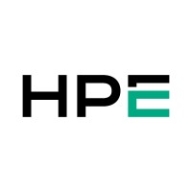

InfluxDB and HPE OneView compete in database management and IT infrastructure management respectively. HPE OneView seems to have the upper hand due to its comprehensive feature set and extensive infrastructure management capabilities.
Features: InfluxDB features high ingestion rates, powerful query language, and horizontal scalability, optimized for time-series data. HPE OneView offers centralized control over hardware, automation of complex tasks, and an open API for integration with other tools.
Room for Improvement: InfluxDB could improve its integration with non-time-series databases, enhance data retention policy management, and expand its visualization options. HPE OneView could simplify its setup process, offer more flexible pricing tiers, and streamline its software updates for reduced downtime.
Ease of Deployment and Customer Service: InfluxDB provides straightforward deployment suitable for cloud and container environments. HPE OneView offers a comprehensive setup process with robust customer support to assist with implementation and troubleshooting.
Pricing and ROI: InfluxDB often has a lower setup cost with favorable ROI in environments reliant on time-series data. HPE OneView, with a higher initial investment, offers substantial ROI through enhanced infrastructure management capabilities and operational efficiency.
InfluxDB reduced my time to show data without any interruption, also reducing the number of people needed to manage the project; it is very good to have InfluxDB in my project.
The customer service and support have been responsive.
I would give the quality of HPE OneView's technical support an eight out of ten rating, indicating good customer service and support in my opinion.
The technical support for HPE OneView rates as an 8 on a scale from 1 to 10, where 1 is the worst and 10 is the best.
HPE OneView is highly scalable, especially useful for organizations with large infrastructures.
HPE OneView is a scalable solution since you can integrate any number of servers based on your license.
Scalability is fine as we can add Synergy frames and extend many frames as needed.
The main challenge with InfluxDB, which is common with all databases, was handling very high throughput systems and high throughput message flow.
We’ve scaled on volume with seven years of continuous data without performance degradation.
InfluxDB's scalability is fine for me; I gather a lot of metrics and have not had any issues.
The stability of the blades is concerning; we have frequent issues with blades having memory or power issues.
HPE OneView is a stable solution that works efficiently.
It supports unified monitoring effectively but may have areas for enhancement.
It serves as the backbone of our application, and its stability is crucial.
It is very stable, with no reliability or downtime in InfluxDB.
After integrating Kafka, it never broke again, as Kafka handled messages and metrics appropriately, decreasing the message throughput.
The upgrade process is lengthy, requiring careful planning as we cannot match ESXi versions without aligning OneView first, leading to delays.
I believe the prices of HPE OneView should be reduced, as it is quite expensive.
From the dashboard and reporting perspective, HPE OneView could be improved by having multiple modules rather than just a single customization option.
InfluxDB deprecated FluxQL, which was intuitive since developers are already familiar with standard querying.
Having a SQL abstraction in InfluxDB could be beneficial, making it more accessible for teams that prefer querying with SQL-style syntax.
It could include automated backup and a monitoring solution for InfluxDB or a script developed by a REST API.
Customers need to pay a substantial amount for the licenses, especially when monitoring a large number of servers and storages.
Our main concern is managing expenses related to the VMware licensing model which affects blade usage.
We use the open-source version of InfluxDB, so it is free.
My experience with pricing, setup cost, and licensing for InfluxDB was great, as I did not use any license.
I can monitor everything in one view, which has significantly improved operational efficiency for us.
The ease of management with HPE OneView is excellent.
One of the best features of HPE OneView is that you get a complete architecture with a single click.
The most important feature for us is low latency, which is crucial in building a high-performance engine for day trading.
InfluxDB’s core functionality is crucial as it allows us to store our data and execute queries with excellent response times.
It helps me maintain my solution easily because it is very reliable, so we didn't face any performance issues or crashes regarding our queries; we can get the results very fast.
| Product | Market Share (%) |
|---|---|
| HPE OneView | 1.4% |
| InfluxDB | 0.5% |
| Other | 98.1% |
| Company Size | Count |
|---|---|
| Small Business | 22 |
| Midsize Enterprise | 15 |
| Large Enterprise | 51 |
| Company Size | Count |
|---|---|
| Small Business | 5 |
| Midsize Enterprise | 3 |
| Large Enterprise | 8 |
HPE OneView is your infrastructure automation engine to simplify operations, increasing the speed of IT delivery for new applications and services. Through software defined intelligence, HPE OneView brings a new level of automation to infrastructure management by taking a template driven approach to provisioning, updating, and integrating compute, storage, and networking infrastructure. Designed with a modern, standard-based API and supported by a large and growing partner ecosystem, HPE OneView also makes it easy to integrate powerful infrastructure automation into existing IT tools and processes. Take command with HPE OneView to deploy infrastructure faster, simplify operations and increase productivity.
HPE OneView innovations provide you the industry’s best infrastructure management experience, simplifying operations for HPE BladeSystem, HPE ProLiant servers, 3PAR storage, HPE Networking and HPE ConvergedSystems.
InfluxDB is open-source software that helps developers and enterprises alike to collect, store, process, and visualize time series data and to build next-generation applications. InfluxDB provides monitoring and insight on IoT, application, system, container, and infrastructure quickly and easily without complexities or compromises in scale, speed, or productivity.
InfluxDB has become a popular insight system for unified metrics and events enabling the most demanding SLAs. InfluxDB is used in just about every type of industry across a wide range of use cases, including network monitoring, IoT monitoring, industrial IoT, and infrastructure and application monitoring.
InfluxDB offers its users:
InfluxDB Benefits
There are several benefits to using InfluxDB . Some of the biggest advantages the solution offers include:
Reviews from Real Users
InfluxDB stands out among its competitors for a number of reasons. Two major ones are its flexible integration options and its data aggregation feature.
Shalauddin Ahamad S., a software engineer at a tech services company, notes, “The most valuable features are aggregating the data and the integration with Grafana for monitoring.”
We monitor all IT Infrastructure Monitoring reviews to prevent fraudulent reviews and keep review quality high. We do not post reviews by company employees or direct competitors. We validate each review for authenticity via cross-reference with LinkedIn, and personal follow-up with the reviewer when necessary.